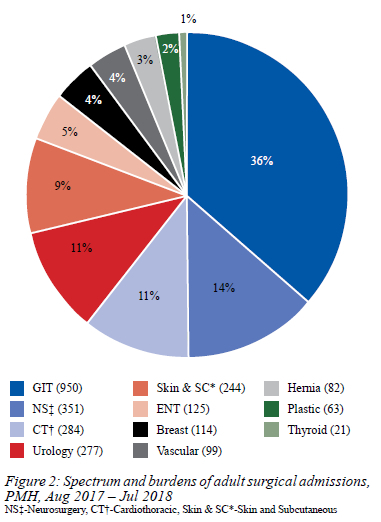Women’s pie in workforce at 18.4% – The Hans India

Report on Female Labour Force Participation in India and Alignment with Sustainable Development Goals
Introduction
This report details the significant increase in the participation of women in India’s formal workforce, based on data presented to the Parliament. The findings highlight substantial progress in female employment, directly contributing to the achievement of key United Nations Sustainable Development Goals (SDGs), particularly SDG 5 (Gender Equality) and SDG 8 (Decent Work and Economic Growth).
Key Statistical Findings on Female Labour Force Participation
Recent data indicates a consistent and robust upward trend in the female Labour Force Participation Rate (LFPR) and formal sector employment.
- Labour Force Participation Rate (LFPR): The estimated LFPR for females aged 15 years and above has shown remarkable growth.
- It increased from 23.3% in the 2019-20 period.
- It reached 41.7% in the 2023-24 period.
- This represents a total growth of 18.4 percentage points.
- Formal Sector Employment Growth: Data from the Employees’ Provident Fund Organisation (EPFO) confirms a significant shift towards formal employment for women.
- During the 2024-25 period alone, 2.69 million net female subscribers were added to the EPFO.
Alignment with Sustainable Development Goals (SDGs)
The reported growth in female workforce participation is a critical driver for India’s progress on the 2030 Agenda for Sustainable Development.
- SDG 5: Gender Equality: The increase in female LFPR directly addresses Target 5.5, which aims to ensure women’s full and effective participation and equal opportunities in economic life. By moving into the formal workforce, women gain greater economic independence and security, which is fundamental to achieving gender equality.
- SDG 8: Decent Work and Economic Growth: The data aligns with Target 8.5, which calls for full and productive employment and decent work for all women and men. The addition of millions of women to the formal sector, as indicated by EPFO data, signifies progress towards more inclusive and sustainable economic growth and the provision of decent work.
Government Initiatives Supporting Female Employment
The government has implemented a range of schemes to foster this positive trend and further boost the female LFPR. These initiatives are designed to provide skills, financial support, and opportunities for women across various sectors.
- Pradhan Mantri Mudra Yojana (PMMY)
- Pradhan Mantri Kaushal Vikas Yojana (PMKVY)
- Stand-UP India Scheme
- Startup India
- Prime Minister’s Employment Generation Programme (PMEGP)
- Women in Science and Engineering- KIRAN (WISE-KIRAN)
- SERB-POWER (Promoting Opportunities for Women in Exploratory Research)
- Mission Shakti
- Namo Drone Didi
- Lakhpati Didi
1. Which SDGs are addressed or connected to the issues highlighted in the article?
SDG 5: Gender Equality
- The article directly addresses gender equality by focusing on the increasing participation of women in the formal workforce. It highlights the growth in the female Labour Force Participation Rate (LFPR), which is a core component of economic empowerment for women.
SDG 8: Decent Work and Economic Growth
- The article’s central theme is the rise in female employment within the formal sector, which is a key aspect of achieving decent work and fostering inclusive economic growth. It mentions the addition of female subscribers to the Employees’ Provident Fund Organisation (EPFO), signifying a shift towards formal, more secure employment.
2. What specific targets under those SDGs can be identified based on the article’s content?
Target 5.5: Ensure women’s full and effective participation and equal opportunities for leadership at all levels of decision-making in political, economic and public life.
- The article’s discussion on the “participation of women in the country’s formal workforce” and the increase in the female LFPR from 23.3% to 41.7% directly relates to ensuring women’s full participation in economic life.
Target 8.5: By 2030, achieve full and productive employment and decent work for all women and men… and equal pay for work of equal value.
- This target is addressed through the article’s focus on increasing formal employment for women. The mention that “26.9 lakh net female subscribers were added to the Employees’ Provident Fund Organisation (EPFO)” points towards progress in achieving productive and formal employment for women.
Target 5.c: Adopt and strengthen sound policies and enforceable legislation for the promotion of gender equality and the empowerment of all women and girls at all levels.
- The article explicitly mentions that “The government is implementing various schemes to boost the female LFPR,” and lists several examples such as Pradhan Mantri Mudra Yojana (PMMY), Stand-UP India Scheme, and Mission Shakti. These represent the adoption of policies to promote the economic empowerment of women.
3. Are there any indicators mentioned or implied in the article that can be used to measure progress towards the identified targets?
Indicator: Labour Force Participation Rate (LFPR) for females.
- The article provides precise data for this indicator, stating that the “estimated Labour Force Participation Rate (LFPR) on usual status for female of age 15 years and above has increased from 23.3 per cent in 2019-20 to 41.7 per cent in 2023-24.” This directly measures women’s participation in the workforce.
Indicator: Number of women in formal employment.
- This is measured through the data from the Employees’ Provident Fund Organisation (EPFO). The article states that “During 2024–25 alone, 26.9 lakh net female subscribers were added to the Employees’ Provident Fund Organisation (EPFO), underlining a shift towards formal employment.”
Indicator: Implementation of government schemes for female empowerment.
- The article implies this as a qualitative indicator by listing numerous government programs designed to boost female LFPR, such as “Pradhan Mantri Kaushal Vikas Yojana (PMKVY)”, “Startup India”, “Namo Drone Didi and Lakhpati Didi”, among others. The existence and implementation of these schemes serve as a measure of policy action.
4. Create a table with three columns titled ‘SDGs, Targets and Indicators” to present the findings from analyzing the article.
| SDGs | Targets | Indicators |
|---|---|---|
| SDG 5: Gender Equality | Target 5.5: Ensure women’s full and effective participation and equal opportunities for… economic… life. | Labour Force Participation Rate (LFPR) for females (Increased from 23.3% to 41.7%). |
| SDG 8: Decent Work and Economic Growth | Target 8.5: Achieve full and productive employment and decent work for all women and men. | Number of net female subscribers added to the Employees’ Provident Fund Organisation (EPFO) (26.9 lakh in 2024-25). |
| SDG 5: Gender Equality | Target 5.c: Adopt and strengthen sound policies… for the promotion of gender equality and the empowerment of all women. | List of government schemes implemented to boost female LFPR (e.g., PMMY, PMKVY, Mission Shakti). |
Source: thehansindia.com

What is Your Reaction?
 Like
0
Like
0
 Dislike
0
Dislike
0
 Love
0
Love
0
 Funny
0
Funny
0
 Angry
0
Angry
0
 Sad
0
Sad
0
 Wow
0
Wow
0











































































